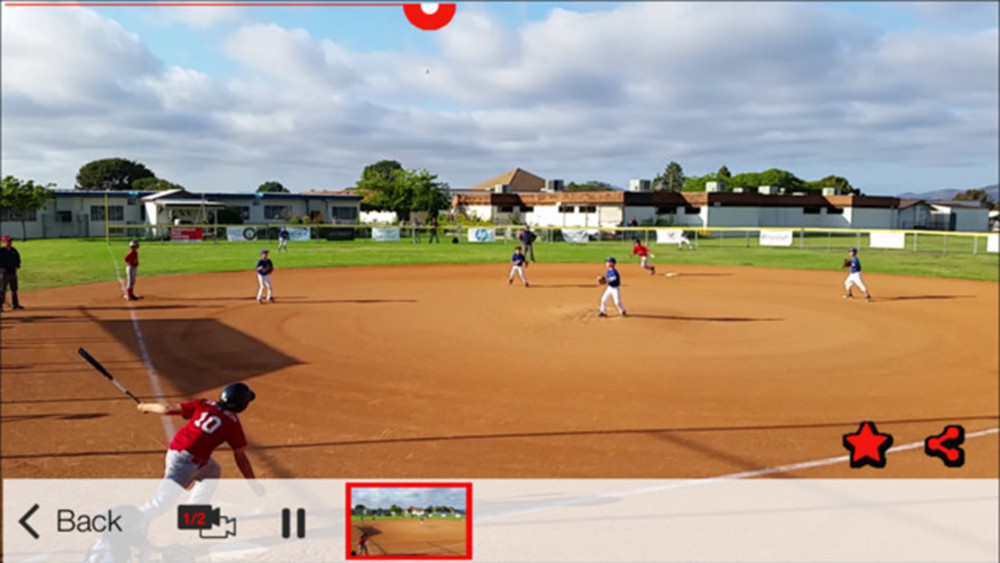By Mike Freeman
The San Diego Union-Tribune
WWR Article Summary (tl;dr) Roughly 31 million kids nationwide participate in youth sports and each year, there are an estimated 25 million youth sports games. If video is shot at these games, it’s usually by a parent. Afterward, they might spend hours downloading and editing. This article takes a look at a few innovative startups that are coming up with unique solutions to make the process easier.
SAN DIEGO
In February, SoCal Volleyball Club set up a couple of video-capable iPods at the games of its four teams playing in the Las Vegas Classic, a large college recruiting tournament.
Instead of recording the entire games and manually editing out the highlights, SoCal Volleyball used a new app from San Diego startup ClipCast Technologies. It let parents tag the best plays, kills, digs, blocks and so on, by simply tapping a button in the ClipCast app on their smartphones during the games.
Parents tagged about 2,000 plays over three days, which were uploaded to ClipCast servers in the Internet cloud. Each parent was able to select specific plays to stitch together a highlight reel for their child, creating a “SportsCenter”-like clip of the best action.
“It was fantastic. It did exactly what we thought it would do,” said Scott Phillips of SoCal Volleyball.
ClipCast, founded in 2014 by former Qualcomm business development executives, is trying to tap into the massive yet fragmented youth-sports market, where an unwieldy number of clubs, leagues and tournaments can make it expensive to get a critical mass of sales.
Moreover, parents already paying hefty amounts on youth sports may balk at spending more for a service like ClipCast. And there are potential competitors in the market such as Shutterfly, TeamSnap and Hudl.
The prize, however, is large. Roughly 31 million kids nationwide participate in youth sports, said ClipCast Chief Executive Manuel Jaime, citing figures from several sources. Each year, there are an estimated 25 million youth sports games, he said.
If video is shot at these games, it’s usually by a parent. Afterward, they might spend hours downloading and editing, said Jaime. Hiring out the editing can be expensive.
ClipCast has come up with an easier way. It uses video shot by one or two smartphones or tablets at a game. The devices, provided by parents, a club or venue, are typically mounted on tripods or fences at the field.
“The youth sports content that we are delivering, it is not professional quality but it is very good because of the (smartphone) cameras,” said Jaime. “And how we parse it and provide it is very compelling.”
From there, the ClipCast app is ready to go. Clips are only saved when parents tag a play by tapping a button on the ClipCast app that they have open on their phones in the stands. The app tells the recording devices to save the play.
So if a goal is scored in a soccer game and a parent pushes the tag button, the previous 20 seconds and the next 10 seconds are uploaded to ClipCast servers.
“Do that 10 times and you walk out of the game with a highlight reel that is essentially ESPN for volleyball or soccer or baseball, and all you had to do was press a button,” said Co-Founder and Chief Technology Officer Oliver Michaelis.
All tagged clips are saved. Parents can select specific highlights to create custom video of their child’s exploits.
The company charges $4.95 per game for an individual user. Teams pay $19.95 per game.
ClipCast has a handful of employees and has raised $500,000 so far. It is currently seeking to raise about $5 million in additional funding.
ScoreStream, another San Diego startup focused on youth sports, offers an app for real-time, crowd-sourced scoring of high school football, basketball and other sports. Users can upload photos and videos via the app. The app was used during 150,000 football games last season.
ScoreStream’s buinsess model is focused on advertising. It provides scores to media companies including regional sports networks, Time Warner and the Chicago Tribune and Baltimore Sun, sister papers to the San Diego Union-Tribune.
“There are a lot of people who do statistic apps or team management,” said Derrick Oien, chief executive of ScoreStream. “And when you put a price on it, the fall-off is hard. The conversion rate is just a couple of percent. So for us, we have taken the approach that let’s create as little friction as possible and keep it free. Ultimately, we think it is an advertising opportunity.”
For now, ClipCast isn’t marketing to parents but instead is targeting venues, as well as youth sports clubs. It hopes that the service will be offered through these facilities or included in player fees.
“The first season we included it in the fees,” said Juan Carlos Paz y Puente, co-owner of Futbol Factory, a soccer training facility outside San Diego. “What is good for us is anyone who sees these clips also sees our brand on the wall. We are a different kind of facility. This is good promotion for us.”
Bill Engfelt, president of San Diego Soccer Club, said offering ClipCast does help set the club apart from others in the region. The club will decide in June whether to continue.
“It is working great for those parents using it,” he said. “The people who really like this is the kids. They show their friends the shot they made, the move they did.”














































































































































































































































































































































































